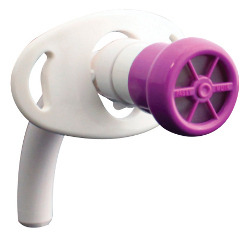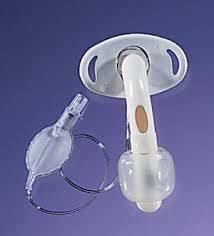Some critically injured patients undergo tracheostomy due to prolonged ventilatory failure. As they recover, the trach tube is usually downsized over time until it can be permanently removed. Unfortunately, this process may take a month or more, and the patient is generally unable to speak during this time. Writing and other forms of communication are both slow and frustrating, so a Passy-Muir valve may be attached to the trach to allow (nearly) normal speech during the recovery process.

The Passy-Muir is a one way valve that allows air to be inhaled through the trach tube, but not exhaled through it. Instead, the air must circulate around the tube and up through the trachea to the pharynx. This particular brand has features that help keep the tube from collecting secretions during speech. See the brief video from the manufacturer below.
The downside to this device is that it increases the work of breathing during exhalation because air must flow around the entire trach tube, which is narrowing the available tracheal lumen. Note: if the trach tube has a balloon, it must be deflated or the patient will not be able to breathe! Some patients do not have enough strength to overcome this narrowing initially, and may not be able to speak or say more than a few words at a time. This improves with practice, and helps speed up tube removal.
Use of a fenestrated tracheostomy tube with the Passy-Muir is helpful, because it has a strategically placed (but small) hole that allows air flow through a portion of the tube. When this type of tube is used, the balloon must also be deflated, since it is subject to mucus plugging which would completely obstruct the airway. Work of breathing is still increased because this hole is small relative to the diameter of the trachea.

Note: I have no financial interest in Passy-Muir Inc or any other tracheostomy product manufacturers.

